Here are 7 Fort Collins history artifacts you might not have known existed
The storage capabilities of Barbie's Dream House were far beyond their time.
At least that's what I found myself thinking as I watched Lesley Struc tuck away its bed and sofa and fold its cardboard walls up into a tidy, portable case.
The original 1962 dreamhouse came to the City of Fort Collins Museum — now the Fort Collins Museum of Discovery — back in 1996, according to Struc, the museum's archive curator.
From there, like all donations, it was inventoried. Its tiny accessories — a Barbie-sized telephone, tennis racket, clothes hangers, spatulas, a framed photo of Ken and dozens more — were meticulously marked with their own tag, handwritten item number and description.
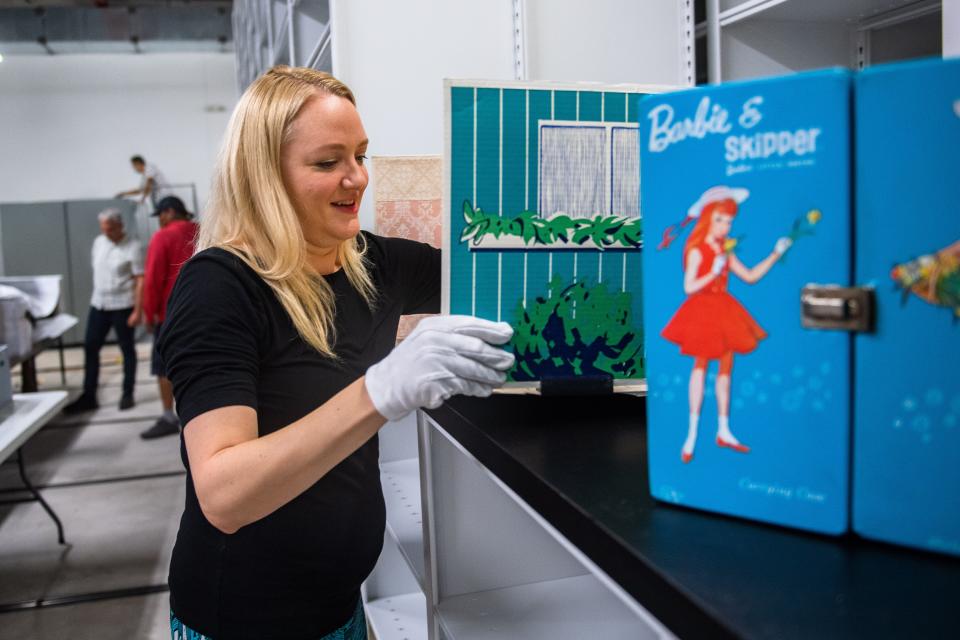
"And that's why museum work makes you crazy," Struc joked on a recent tour behind the scenes of the Fort Collins Museum of Discovery's on-site collections storage area.
The museum's storage spaces — and its smaller glass-walled local history archive just off its lobby — are together home to more than 40,000 three-dimensional artifacts, more than 200,000 photographs, hundreds of special collections and oral histories and thousands of maps, books and research files.
There, the Archives & Collections Department staff and volunteers serve as the keepers of Fort Collins history, processing donated artifacts, digitizing historical documents and helping archive visitors navigate its vast sea of offerings.
"Here at the museum, we like to say that we tell global stories through a local lens," Struc said.
"Is Barbie unique to Fort Collins? No," she continued, turning to a nearby 1960s-era Barbie wardrobe case with images of Barbie and her little sister Skipper. "But what is unique to Fort Collins is the story from this case and some of the fashions."
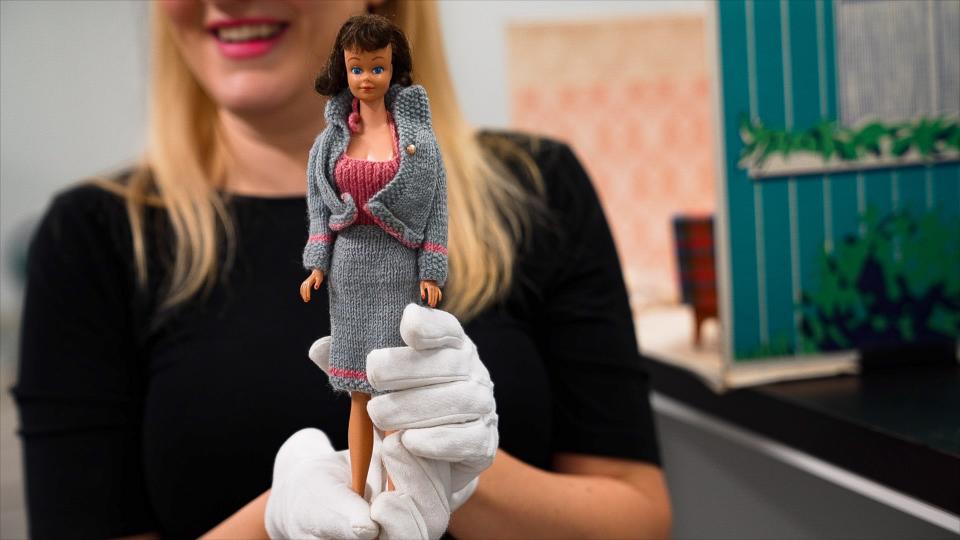
Soon, Struc had produced a Midge doll — Barbie's best friend — from a nearby plastic tub. She was wearing an intricate hand-knit skirt set made by a Fort Collins woman. She would sell these custom pieces to her neighbors for a dollar, Struc explained, in awe of its tiny stitching. The carrying case and its clothes inside were donated by one of that woman's neighbors in 2018, according to the museum's records.
With the museum's collections space in the process of being expanded — a project that will effectively double its on-site storage capacity — I asked Struc to take the Coloradoan on a tour of some of her favorite Fort Collins artifacts tucked among its aisles.
History nerds, rejoice: Here are all 34 episodes of the Coloradoan's history "podpast" podcast
1962 Barbie Dream House
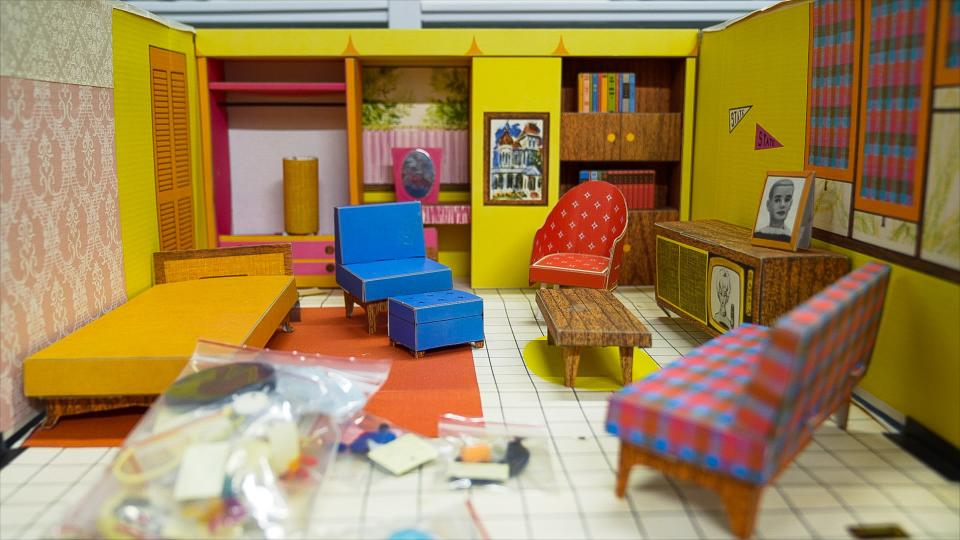
Perfect for the guy or gal on the go, this foldable, portable playhouse offers a glimpse into Barbie's early years. It was the first of many iterations of the famous Barbie Dream House, with a simple studio layout, cardboard furniture and a closet for Barbie's growing wardrobe. The early cardboard Dream House gave way to the plastic versions of the mid-1960s, 1970s, 1980s and 1990s. Over time, they've morphed into sprawling multilevel mansions fitted with slides, hot tubs and disco balls. But who says you can't go home again? For its 75th anniversary, Mattel sold reproductions of Barbie's original Dream House for a limited time in 2020.
Life in plastic, it's fantastic: Moviegoers don pink, head to Holiday Twin for 'Barbie' premiere
Sutler's Store Ledger
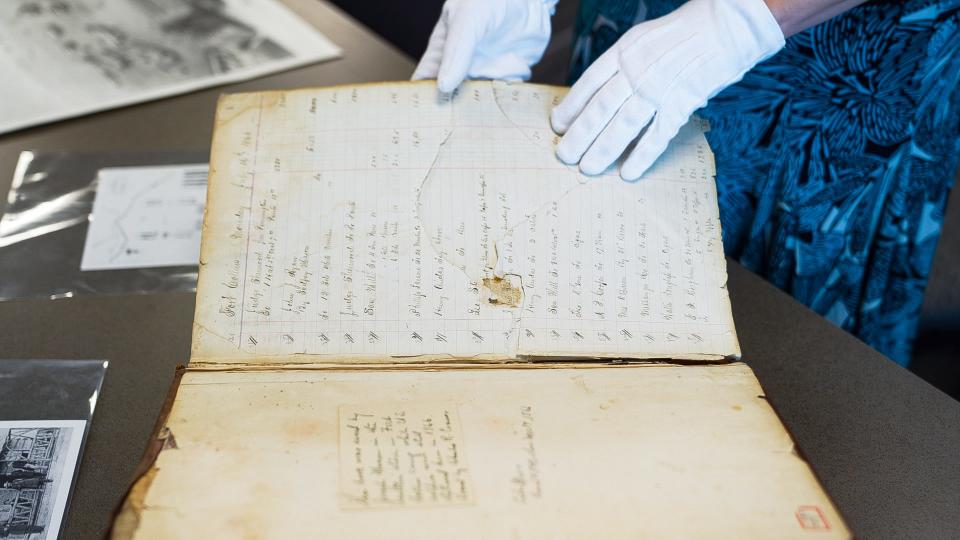
When Auntie Elizabeth Stone walked into Fort Collins' sutler's store for some molasses in the late 1860s, she probably didn't think that purchase would be inked into Fort Collins history. It was, though, and remains immortalized forever in the looping cursive of Joseph Mason's handwritten store ledger. Mason built the small store — better known by locals as Old Grout — back when Fort Collins was still Camp Collins. After the Civil War ended and the Army post was abandoned in 1866, Mason and other area settlers stuck around, ultimately building the foundation for what would become Fort Collins. From 1866 to 1869, their ordinary, everyday purchases were recorded in Mason's ledger. Today it's one of several early Fort Collins artifacts at the museum and is occasionally brought out for exhibitions, according to Struc.
Oral history collection
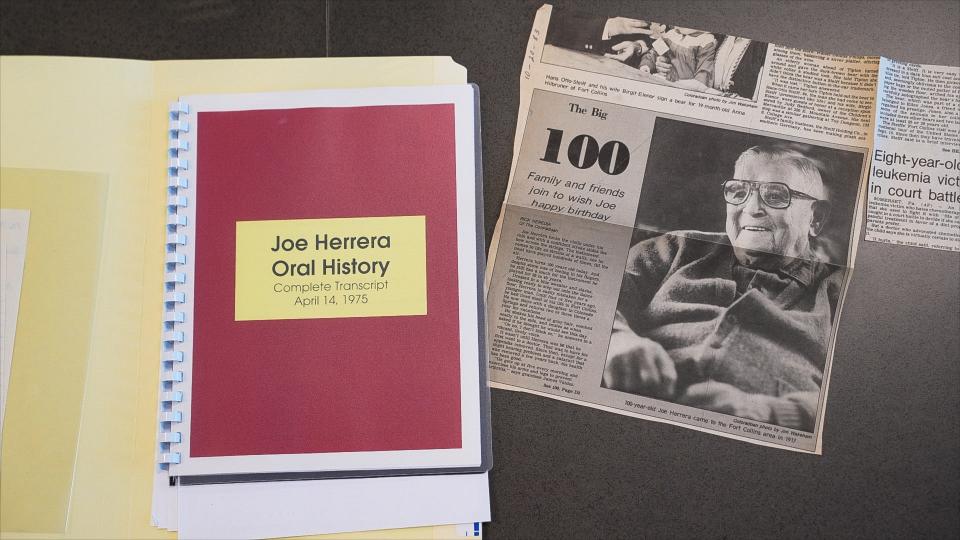
Want to hear history? You can thank late historian Charlene Tresner for making that possible in Fort Collins. In the 1970s, Tresner started recording oral history interviews with longtime Fort Collins residents. Cassette after cassette, these interviews would ultimately come to make up the museum's expansive oral history collection, which now has nearly 650 recorded interviews listed on the history archive's website. One of Struc's favorite interviews is a 1975 conversation between Tresner and Joe Herrera, a longtime Alta Vista resident who lived in Fort Collins from 1917 to 1976. In Herrera's interview, he talks about the area's beet farming industry, raising children with his wife, Elvira, and how to make the adobe bricks that many early Tres Colonias homes were built with. Herrera died in 1986 at age 102.
Prom dresses
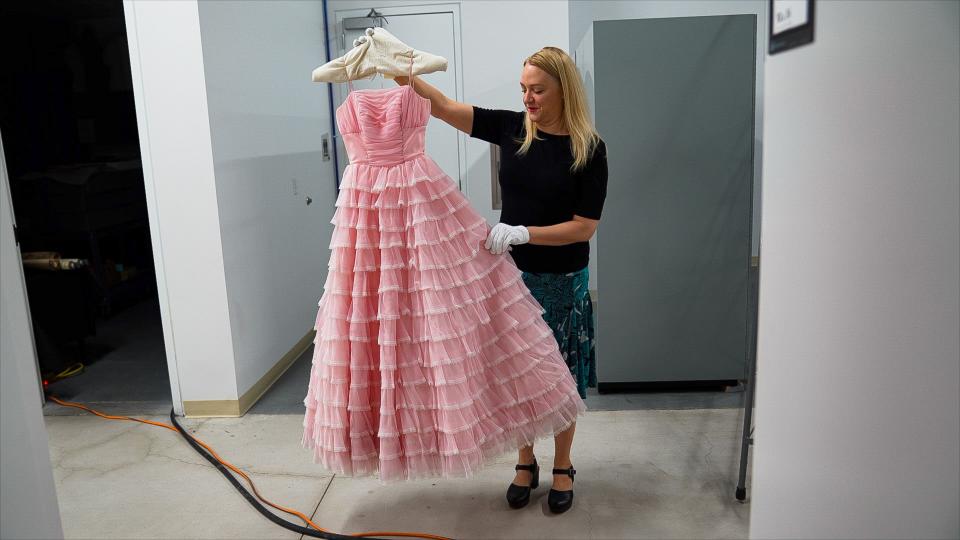
Creaking open a 1962 Fort Collins High School yearbook, Struc flipped to a page of senior portraits and pointed to Karen Brunz. Brunz, donning cat-eyed glasses and a head of short curls, was "lively, witty and full of fun ... A good friend and a true one," her yearbook description read. "Remember that name," Struc said, turning away from the book and down one of the many aisles of shelving in the museum's storage space. Soon, she had plucked a frilly pink tea-length gown out of a cabinet and pulled it into the light. It was Brunz's prom dress. "I feel like it's like a cupcake," Struc said, adding that it also happened to be the pink version of the dress Frenchy wore to prom in the 1978 hit "Grease." It's one of a handful of locally worn prom dresses in storage at the museum, including an ivory, two piece "gunny sac"-style dress from 1972 Struc also pulled out from storage during our recent visit. Seeing a need to save a Poudre High School prom dress for posterity, its donor dropped it off in 2015, according to its tag.
Canyon crafts
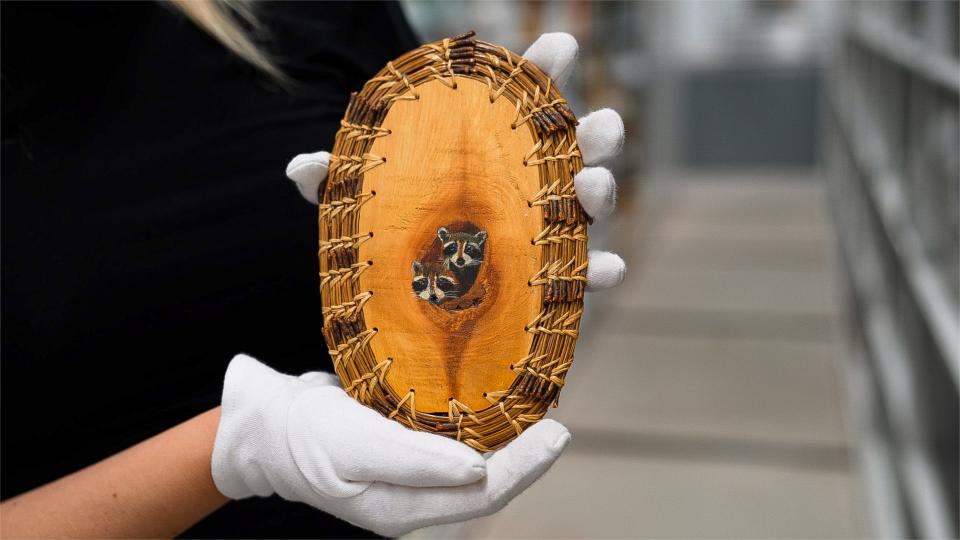
For nearly nine decades, Helen and Alice Dickerson were living legends up in Buckhorn Canyon. Raised in a rustic cabin on their family homestead, the "indomitable" Dickerson sisters chose to never marry and never leave — spending their days working at the family sawmill and their winters weaving pine needle baskets and painting wood plaques and mountain scenes, according to Struc and a Coloradoan history column on the Dickersons. Many of those pieces of mountain art ended up at the Fort Collins Museum of Discovery — as did an ice saw fellow Poudre Canyon old timer and artist Polly Brinkhoff painted. These artifacts offer a peek into the no-frills lives several canyon residents continued living into the 1990s.
Podpast: The life and times of Colorado mountain woman Polly Brinkhoff
1980s computers
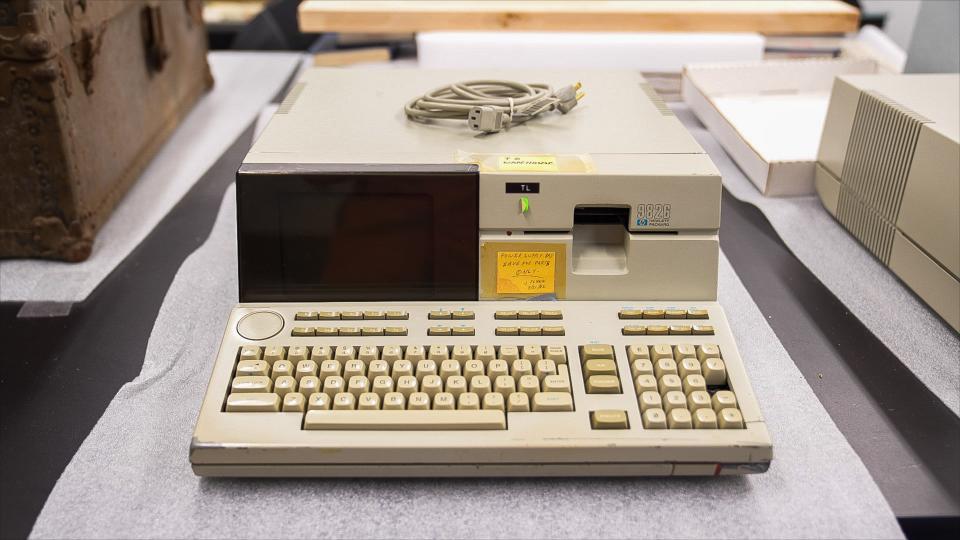
As two of the museum's newer donations, this pair of boxy computers hearkens back to Hewlett-Packard's early years in Fort Collins. They were made at the tech company's Fort Collins campus in the early 1980s and used at Woodward Governor, Struc said.
Throwback photos: Hewlett-Packard through the years in Fort Collins
Mary Hottel's chap book
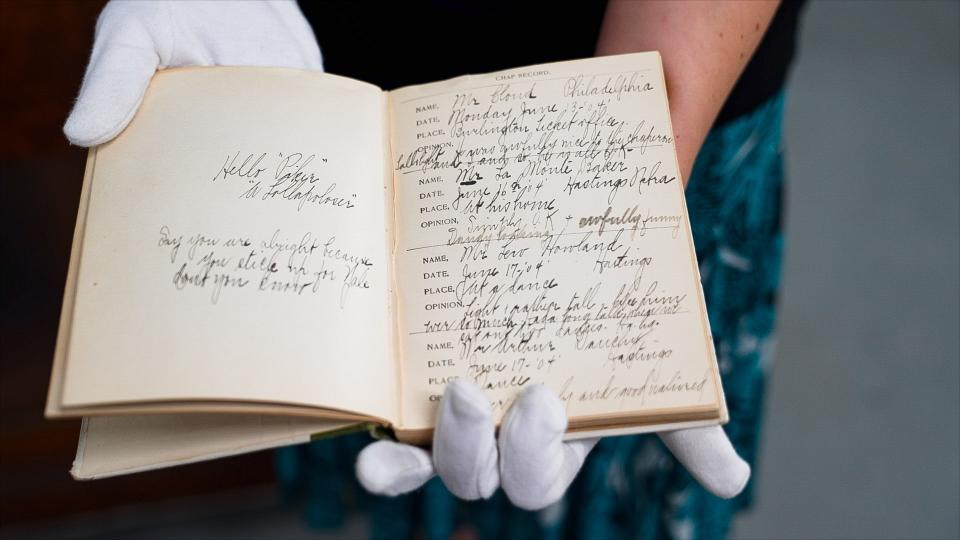
If you were a young man in Fort Collins at the turn of the 20th century, you might have landed in Mary Hottel's chap book. Officially called "The Chap Record," the largely blank, journal-like book was published in 1898 as a way for ladies like Mary to detail the men they met — essentially a personal "Yelp for 1900s eligible bachelorettes."
Mary, the daughter of wealthy Fort Collins flour mill owner and Poudre Valley Bank president B.F. Hottel, pulled no punches in her record keeping.
"She documented every man she met at parties and get-togethers ... the date, where she met them and her opinion of them. She had a lot of strong opinions," Struc said, flipping through its yellowed pages.
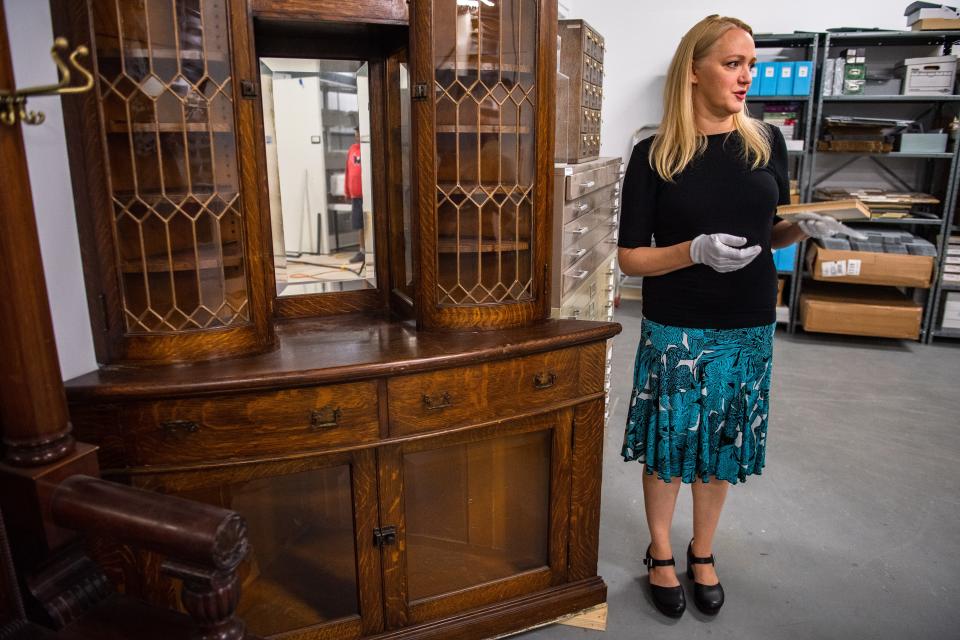
If you were like Mr. Edward Iddings, a Colorado Agricultural student Mary met at a college club dance in December 1904, she thought you were "right good looking." Some of his fellow classmates weren't so lucky, with Mary labeling them as dull, "funny looking" or "short."
"(It) shows the nature of dating and meeting people and how it's changing at the turn of the 20th century," Struc said of the book, which Mary penned in her early 20s in Fort Collins.
Mary seemed to live a charmed life in the Choice City and resided with her parents in the Hottel House. The grand 1883 Italianate-style mansion, where Mary lived until her 1960 death, was demolished in 1962 to make way for a JCPenney store. It's now home to Old Town's Ace Hardware.
Like Mary's chap book, some of the Hottel House furniture also ended up in the museum's collections, including a giant wood cabinet and coat tree with wood pillars and intricately carved edges, Struc pointed out. The furniture was acquired by the museum in 2016 and has not yet been on exhibit, according to Struc and museum records.
More on the Hottel House... and 7 other historic Old Town Fort Collins buildings
Take your own Fort Collins history journey
Want to peek into Fort Collins' history? The Archive at the Fort Collins Museum of Discovery have a couple of ways to do so. First, you can start your history search by perusing the thousands of digitized documents, directories, historic timelines and photographs at history.fcgov.com.
If you'd like to see what is physically in the archive — or need an archivist's help researching a topic — the Archive at the Fort Collins Museum of Discovery is free and open to the public. Appointments are encouraged and can be made at history.fcgov.com/visit. Visitor hours are 10 a.m. to 1 p.m. Tuesday through Saturday.
This article originally appeared on Fort Collins Coloradoan: Fort Collins history: Step back in time with these 7 local artifacts

